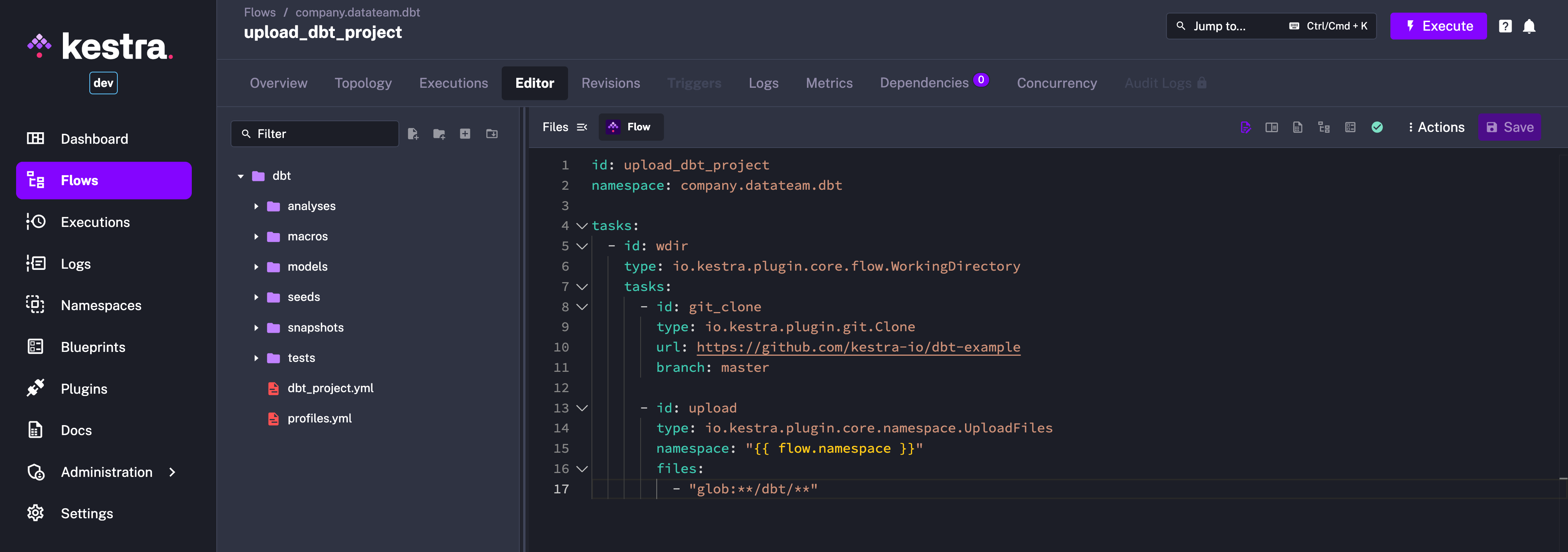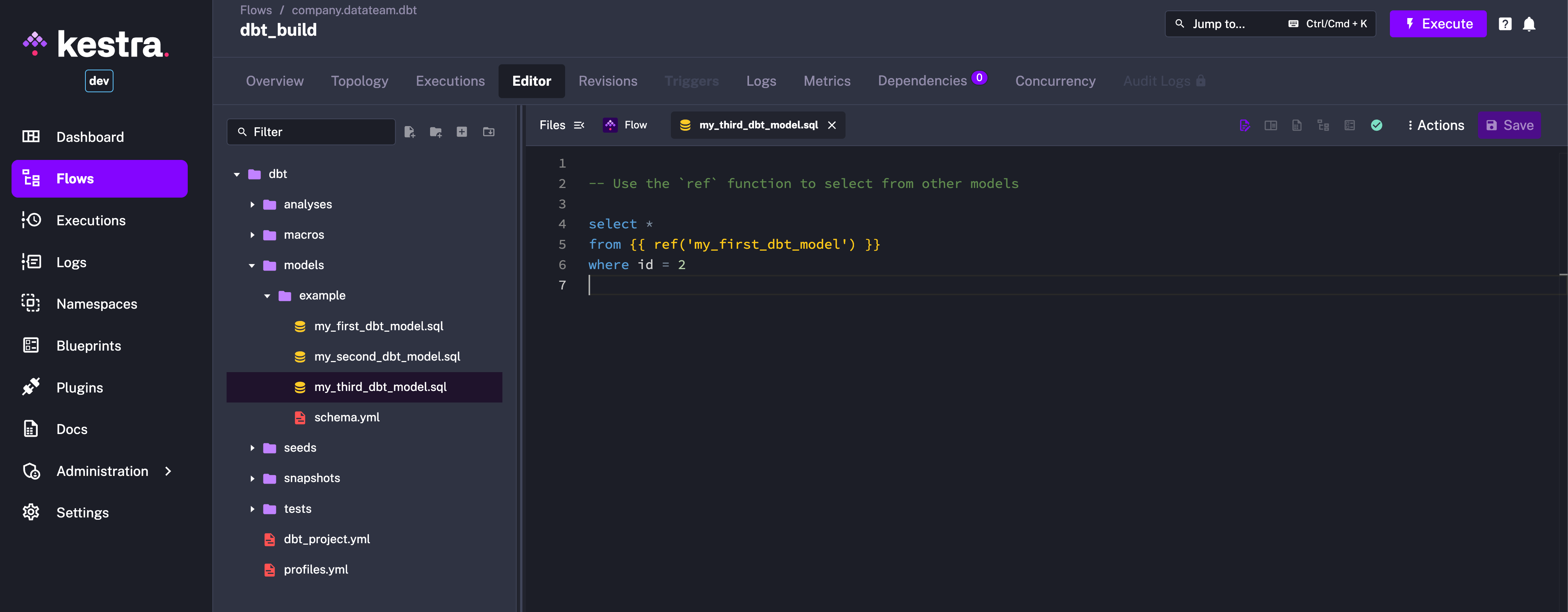 Manage dbt projects with Kestra's Code Editor
Manage dbt projects with Kestra's Code Editor
Available on: >= 0.18.0
Edit dbt code from Kestra's Code Editor
Overview
Kestra's built-in Code Editor allows you to easily manage dbt projects by cloning the Git repository with the dbt code, and uploading it to your Kestra namespace. You can make changes to the dbt models directly from the Kestra UI, test them as part of an end-to-end workflow, and push the changes to the desired Git branch when you are ready.
Let's look at how you can use Kestra's Code Editor to manage dbt projects.
Clone a dbt project from Git
This flow pulls a dbt project from Git and uploads it to Kestra as Namespace Files:
id: upload_dbt_project
namespace: company.datateam.dbt
tasks:
- id: wdir
type: io.kestra.plugin.core.flow.WorkingDirectory
tasks:
- id: git_clone
type: io.kestra.plugin.git.Clone
url: https://github.com/kestra-io/dbt-example
branch: master
- id: upload
type: io.kestra.plugin.core.namespace.UploadFiles
namespace: "{{ flow.namespace }}"
files:
- "glob:**/dbt/**"
You can use this flow as an initial setup:
- Add this flow within Kestra UI
- Save it
- Execute that flow
- Click on the
Filessidebar in the code editor to view the uploaded dbt files.

Run dbt CLI commands
Let's create a flow that runs dbt CLI commands:
id: dbt_build
namespace: company.datateam.dbt
inputs:
- id: dbt_command
type: SELECT
allowCustomValue: true
defaults: dbt build --project-dir dbt --profiles-dir dbt --no-partial-parse --target prod
values:
- dbt build --project-dir dbt --profiles-dir dbt --no-partial-parse --target prod
- dbt build --project-dir dbt --profiles-dir dbt --no-partial-parse --target prod --select state:modified+ --defer --state ./target --target-path ./dev
tasks:
- id: dbt
type: io.kestra.plugin.dbt.cli.DbtCLI
namespaceFiles:
enabled: true
containerImage: ghcr.io/kestra-io/dbt-duckdb:latest
projectDir: dbt
commands:
- "{{ inputs.dbt_command }}"
loadManifest:
key: manifest.json
namespace: "{{ flow.namespace }}"
storeManifest:
key: manifest.json
namespace: "{{ flow.namespace }}"
taskRunner:
type: io.kestra.plugin.scripts.runner.docker.Docker
Note how by using the namespaceFiles property, we can run dbt commands on the files uploaded to the namespace. This allows you to test the dbt models without having to build the entire project every time.
Execute the flow using the default value for the dbt_command input.
Edit dbt files
You can now open the dbt files in the Code Editor and make changes as needed. For example, let's add a new model my_third_dbt_model.sql:
select *
from {{ ref('my_first_dbt_model') }}
where id = 2

When you now run the flow using the second dropdown value for the dbt_command input, only the new model will be built. This allows you to test the changes quickly and iterate faster.
Push changes to Git
Once you are satisfied with the changes, you can push them to the same Git repository to your desired Git branch using the PushNamespaceFiles.
id: push_dbt_to_git
namespace: company.datateam.dbt
inputs:
- id: commit_message
type: STRING
defaults: "Changes to dbt from Kestra"
tasks:
- id: commit_and_push
type: io.kestra.plugin.git.PushNamespaceFiles
namespace: "{{ flow.namespace }}"
username: git_username
password: "{{ secret('GITHUB_ACCESS_TOKEN') }}"
url: https://github.com/git_username/scripts
branch: dev
gitDirectory: dbt
commitMessage: "{{ inputs.commit_message }}"
Make sure to adjust the url, branch, and gitDirectory properties to match your dbt Git repository structure. If the branch does not exist, it will be created. If you want to test this step more incrementally, you can set the dryRun property to true to validate the changes before committing them to Git.
Was this page helpful?